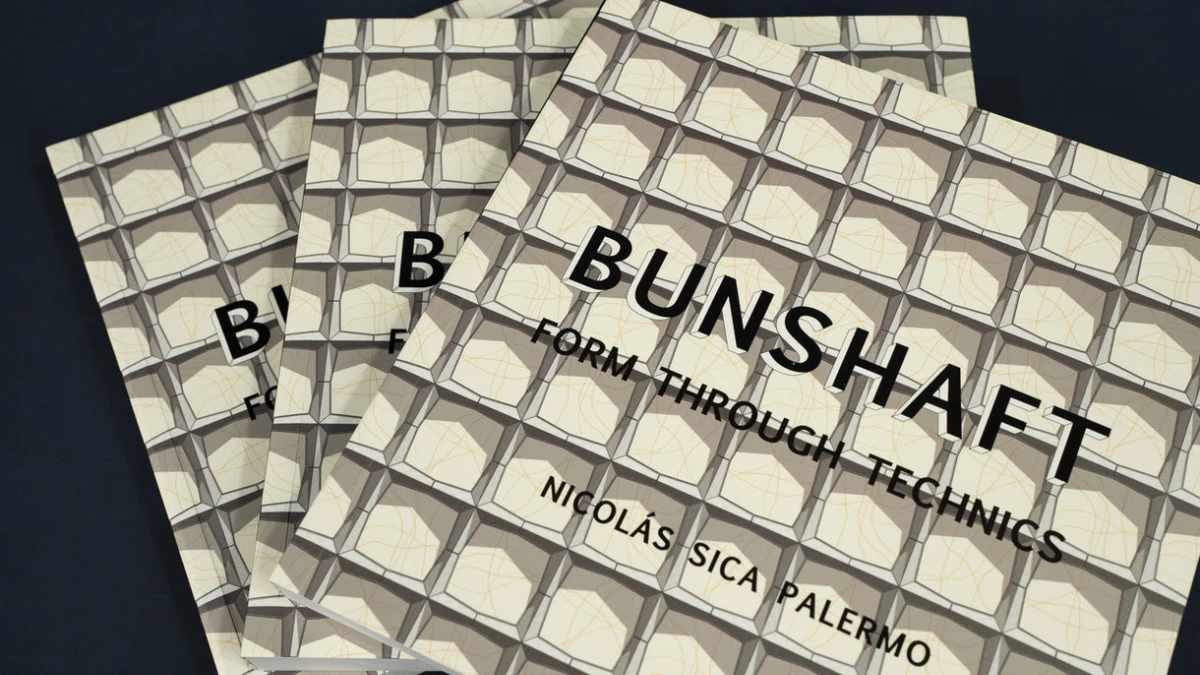This post contains affiliate links. We may earn a commission if you click on them and make a purchase. It’s at no extra cost to you and helps us run this site. Thanks for your support!
A groundbreaking book, Gordon Bunshaft: Form Through Technics by Nicolás Sica Palermo, invites us to re-examine the genius of an architect who sculpted the corporate identity of post-war America. This isn’t just another look at modernist architecture. Instead, it’s a deep exploration of how Gordon Bunshaft’s revolutionary designs at Skidmore, Owings & Merrill (SOM) were born from a seamless fusion of visionary aesthetics and cutting-edge technical skill. The book compellingly argues that to understand Bunshaft is to understand the very DNA of modern corporate architecture.
Bunshaft’s work is more relevant than ever. In an age where sustainability and technological integration are paramount, his pioneering methods offer profound lessons. He didn’t just design buildings; he created systems where form and function were inextricably linked, a principle that resonates deeply with contemporary architectural challenges. This book peels back the layers of his iconic structures, revealing the intricate dance between artistic vision and engineering prowess that defined his legacy.

Why Does Gordon Bunshaft Still Matter?
Gordon Bunshaft was a titan of 20th-century architecture. Yet, his name is often overshadowed by the colossal firm he helped build, Skidmore Owings & Merrill. Known for his brusque, no-nonsense personality, Bunshaft let his buildings speak for themselves. And speak they did. From the shimmering glass curtain wall of the Lever House to the monumental travertine presence of the Beinecke Library at Yale, his work defined an era of American optimism and corporate power.
Palermo’s Gordon Bunshaft: Form Through Technics positions Bunshaft not just as a designer but as a master integrator. He masterfully blended art, technology, and commerce. The book meticulously demonstrates how SOM’s success rested on a powerful triad. This included a steadfast commitment to modern architecture. It also involved pioneering American organizational methods. Finally, it required an unparalleled mastery of industrialized building techniques. This unique combination allowed Bunshaft to continuously innovate, adapting his designs to new technological advancements while remaining true to his modernist principles.
Consider this: How can a singular architectural vision thrive within a massive corporate structure? Palermo’s work suggests that for Bunshaft, the structure of SOM was not a constraint but a vehicle. It provided the technical and organizational firepower necessary to realize his ambitious designs. Consequently, these designs consistently pushed the boundaries of what was possible in architectural history.
The Lever House: A Paradigm Shift on Park Avenue
Completed in 1952, the Lever House was more than just an office building; it was a statement. It was one of the first glass-walled skyscrapers in New York City. Subsequently, it fundamentally altered the urban landscape of Park Avenue. Palermo’s book delves into the technical innovations that made this icon a reality. The all-glass curtain wall, a feature that would become synonymous with corporate modernism, was chosen to reflect the soap company’s image of cleanliness and transparency.
Moreover, the design incorporated a public plaza at its base. It lifted the tower on pilotis, creating an open, inviting space in Manhattan’s dense urban fabric. This move was revolutionary, redefining the relationship between a private corporate headquarters and the public realm. Gordon Bunshaft: Form Through Technics explores how these design choices were not merely aesthetic. They were deeply intertwined with the technological capabilities of the time. This included the sealed, heat-resistant glass that reduced cooling costs. It also featured the innovative window-washing gondola designed for its maintenance.
Beyond the Glass Box: Evolving with Technology
Bunshaft’s work was far from monolithic. As Palermo’s research highlights, his designs evolved in complexity and expression throughout his career. In the 1960s, his projects began to feature more expressive and technically refined structures. This evolution was made possible by SOM’s relentless pursuit of architectural innovation in industrialized building materials and prefabrication techniques.
Gordon Bunshaft: Form Through Technics reveals that the New York office, under Bunshaft’s leadership, was the first to introduce precast concrete units into its designs. This technical leap allowed for a new range of formal possibilities. The structural system itself became a primary determinant of the building’s shape. This symbiotic relationship between form and “technics”—the synthesis of technology and technique—is the central thesis of Palermo’s compelling narrative. Anyone wondering, “who was Gordon Bunshaft architect?” will find the answer in this synthesis. His later works, like the Hirshhorn Museum, showcase this mature phase, where structure and sculpture become one.
A Legacy Forged in Steel and Vision
Nicolás Sica Palermo’s Gordon Bunshaft: Form Through Technics is an indispensable addition to the architectural canon. It moves beyond a simple monograph to offer a nuanced understanding of a complex and often enigmatic figure. The book is a product of extensive scholarly research, drawing from numerous architectural seminars and congresses. If you want to know what is SOM architecture known for, this book is a crucial starting point.
Book Specifications:
- Trim: 8″ x 8″ Square
- Publisher: Oro Editions
- Pages: 206pp + cover with flaps
- Binding: Softbound
- ISBN: 978-1-961856-91-2
- Cost: $40.00
- Publish Date: 10/01/25
This work redefines Bunshaft’s legacy, showing that his buildings were not just aesthetic objects. They were profound investigations into the integration of design and advanced construction. It illuminates the foundational impact of SOM in shaping 20th-century architecture. Therefore, it provides vital lessons on the enduring power of merging visionary design with technical mastery.
For anyone interested in modern architecture, corporate design, or the intersection of art and technology, this book offers a compelling narrative. It forces us to look again at the skylines Bunshaft helped create. We can now appreciate the intricate thought and technical ingenuity that brought them to life. It’s a powerful reminder that the most enduring forms are often born from the most sophisticated techniques. This book is essential for understanding the impact of modernism on corporate buildings.
All images © Oro Eeditions. Check out WE AND THE COLOR’s Architecture and Books categories for more.
Subscribe to our newsletter!

















